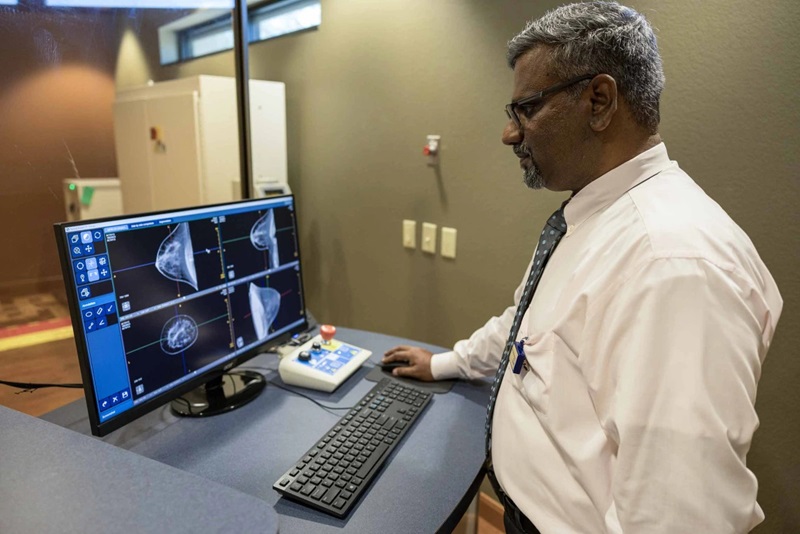Novel Breast Cancer Screening Technology Could Offer Superior Alternative to Mammogram
Posted on 24 Oct 2024
Breast cancer represents 15.5% of new cancer cases and 7% of cancer-related deaths in the United States. Approximately 13.1% of women will be diagnosed with breast cancer during their lifetime. A significant number of women of screening age who do not undergo regular screenings cite the discomfort associated with compression as a reason for avoiding mammograms. This highlights the importance of advancements in screening technology. Researchers are now testing a novel imaging technique for breast cancer detection that they hope will eventually serve as a better alternative to the traditional mammogram.
Researchers at the University of Arizona Health Sciences (Tucson, AZ, USA) are exploring non-compression computed tomography (CT) technology that could potentially detect more breast cancers while improving comfort and reducing radiation exposure. Their advanced breast CT system eliminates the need for physical compression of the breast and addresses tissue overlap issues. Instead, it generates high-resolution 3-D images using detailed CT scans. The researchers believe this method could significantly improve early cancer detection and diagnosis, particularly for the subset of women with dense breast tissue, which contains more fibrous and glandular components that can obscure tumors.

The research team plans to refine their non-compression CT scanner prototype, which has already been tested with 92 women. They will concentrate on advanced image reconstruction techniques and recruit an additional 600 volunteers to further evaluate the breast CT system, comparing its effectiveness with 3-D mammography, the current standard for breast cancer detection. The implications of the team’s research extend beyond breast imaging and may eventually be applied to enhance radiation therapy, surgical planning, and detailed imaging of other major organ systems.
“With our technology, there is a hole on the table and the woman lies prone with the breast through the hole. The tube spins around 360 degrees,” said Srinivasan Vedantham, PhD, a professor in the U of A College of Medicine – Tucson’s Department of Medical Imaging and member of the U of A Cancer Center. “There is nothing in contact with the breast — no compression, nothing. You lie face down, and it takes 10 seconds to image each breast. The advantage of breast CT is we have a whole 3-D image. It would have better sensitivity in detecting breast cancer, particularly for women with dense breasts. Our goal is to enhance breast cancer screening technology to improve early detection and outcomes for patients.”
Related Links:
University of Arizona Health Sciences














